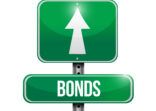“The reason why we don’t focus on dividend yield is because a high yield is not an automatic signal for value,” Miyata told FSA.
High dividend yields may be an indicator that investors are becoming more sceptical of a company’s long-term income stream. “High yields in many cases can be a signal of danger,” he said.
That happened during the global financial crisis, when some companies announced yields of around 8%-15% and they ended up being cut or eliminated, Miyata said.
Low dividend paying companies are more likely to increase payouts over time, he said.
“You can access that rising income stream at the right price, then the share price will naturally follow, and the combination of rising income and capital will give you total returns overall,” he said.
Cash flow and profit
Miyata is responsible for the client-facing tasks involving the firm’s equity income strategies, which have a total AUM of $10bn. The various strategies are managed by an eight-person investment team based in London. The global strategy is the biggest with $8bn in assets.
The firm looks for companies that are paying dividends and at the same time profitable enough to allow reinvesting earnings back into in the business for growth. “Unless the company has growth prospects, they cannot sustain long-term dividend growth,” he said.
Ideally, the team would like companies that are increasing dividends every year, according to Miyata. However, some companies are sensitive to economic factors, which is why they are also evaluated on cash flow. This provides an indicator of how a company is likely to manage during a recession.
Warning signs
He said that the team typically invest in companies that have payout ratios of between 25% and 75%. The payout ratio is the amount of dividends paid to shareholders relative to the amount of the company’s total net income.
Companies with high divdend payout ratios are approached from a risk perspective.
“If you are paying out more than 75% of your cashflow, that actually raises questions about the long-term growth prospects for that business because you are not investing in the business,” he said.
In the event that a company announces a dividend cut, Miyata said that the team would not sell the stock right away.
That stock would go into the “sale at the right price bucket”, where the investment team waits for the stock price to recover and sells it at what they believe is a reasonable price.
“We don’t sell right away because [a dividend cut announcement] tends to be the worst time to sell. There is so much bad news or negative sentiment toward the stock and investors will sell the stock as they react to the news.”
Dividend cut announcements for the team’s selected stocks don’t happen too often, he said. For the firm’s European strategy, which holds 40 stocks, maybe three stocks could be affected, he added.
The three-year performance of two of the firm’s equity income strategies versus their benchmarks, according to FE data.
M&G Global Dividend Fund

The fund NAV and benchmark index have been converted to British pounds for comparison purposes.
M&G Pan European Dividend Equity Fund

The fund NAV and benchmark index have been converted to euros for comparison purposes.
















